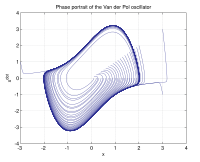Symplectic structure

Imagine you are playing with a ball on a playground. You toss the ball back and forth with a friend. Each time you catch the ball, you feel its weight and shape in your hands. This feeling of weight and shape is kind of like a symplectic structure.
A symplectic structure is a mathematical concept used to describe how objects move in space. It's like a set of rules or a framework for how things can move, kind of like the rules of a game or a sport.
In math, the symplectic structure is defined as a set of equations that describe how objects move in a space that has certain properties. Just like how you have to follow certain rules when playing a game, objects in a space with a symplectic structure have to follow certain rules when they move.
One important property of a space with a symplectic structure is that it doesn't have any holes or gaps. This means that if you start moving an object in a certain direction, it can keep moving in that direction forever without ever getting stuck or running into a dead end.
Another property of a space with a symplectic structure is that it's conserved. This means that the total amount of movement or energy in the space stays the same, even if objects are moving or colliding with each other.
So, to sum it up, a symplectic structure is like a set of rules or a framework for how objects can move in a space without getting stuck or losing energy. It's kind of like a game or a sport, but for math and physics!
A symplectic structure is a mathematical concept used to describe how objects move in space. It's like a set of rules or a framework for how things can move, kind of like the rules of a game or a sport.
In math, the symplectic structure is defined as a set of equations that describe how objects move in a space that has certain properties. Just like how you have to follow certain rules when playing a game, objects in a space with a symplectic structure have to follow certain rules when they move.
One important property of a space with a symplectic structure is that it doesn't have any holes or gaps. This means that if you start moving an object in a certain direction, it can keep moving in that direction forever without ever getting stuck or running into a dead end.
Another property of a space with a symplectic structure is that it's conserved. This means that the total amount of movement or energy in the space stays the same, even if objects are moving or colliding with each other.
So, to sum it up, a symplectic structure is like a set of rules or a framework for how objects can move in a space without getting stuck or losing energy. It's kind of like a game or a sport, but for math and physics!
Related topics others have asked about:
